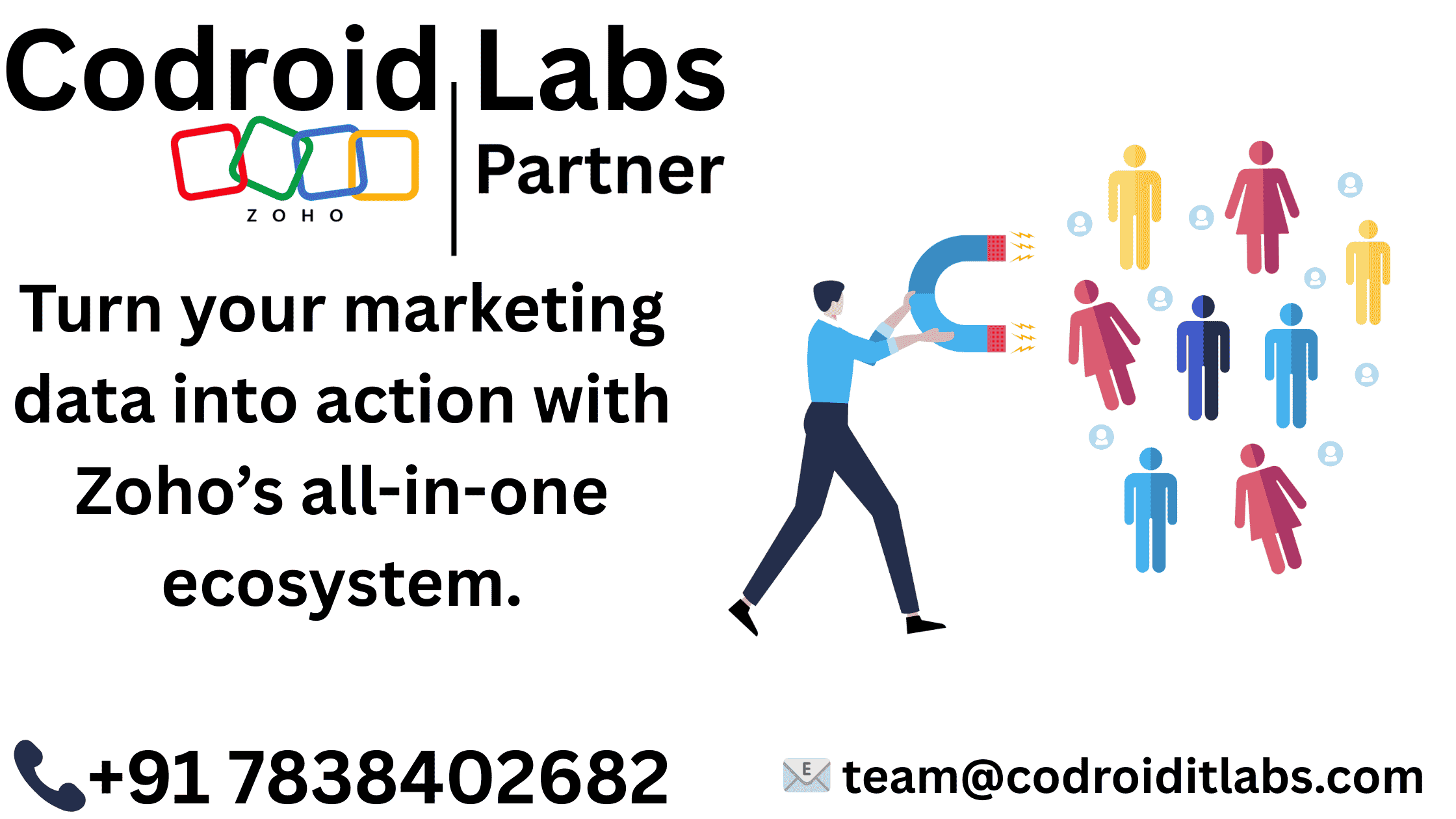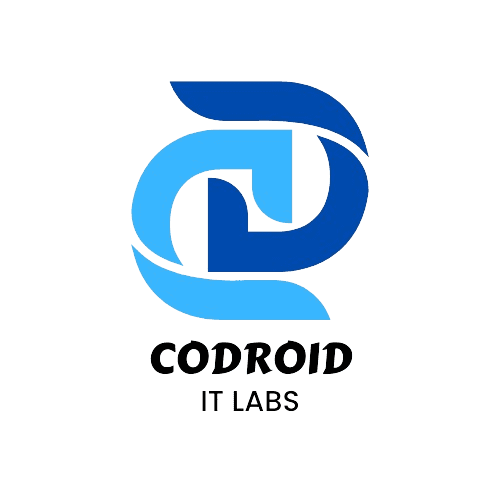
Introduction
In the past, marketing initiatives frequently leaned on intuitive hunches, memorable taglines, and a measure of good fortune. Today, however, businesses no longer need to speculate about what resonates with their audience; precise insights can be gleaned directly from data. A data-centric marketing framework leverages numerical information, actionable intelligence, and emerging trends to inform strategic decisions, resulting in more targeted and impactful campaigns. And the best part? You don’t need a prodigious mathematical mind to implement it effectively.
This comprehensive guide will lead you through the methodical creation of a data-driven marketing blueprint, utilizing the Zoho Ecosystem suite of tools as your essential resource. You’ll discover how to seamlessly connect various touchpoints – from capturing customer activities via Zoho CRM, to dissecting patterns in Zoho Analytics, and automating client engagement with Zoho Campaigns. By the conclusion of this journey, you’ll not only grasp the underlying principles but also gain access to a ready-to-use blueprint to immediately launch your own marketing endeavors.
Key Insights
Data-informed marketing eliminates guesswork by shaping decisions with precise customer intelligence.
The Zoho platform, encompassing tools like CRM, Analytics, Campaigns, and Social, offers an all-encompassing suite for managing and interpreting marketing data.
Audience segmentation forms the bedrock of highly personalized and effective promotional efforts.
Automated processes within Zoho applications ensure consistent brand interaction and quantifiable outcomes.
An actionable template streamlines the initial steps of developing your bespoke marketing plan.
The Indispensable Role of Data-Driven Marketing
Data-driven marketing isn’t merely a fashionable phrase; it represents a fundamental paradigm shift in how organizations interact with their clientele. Instead of pondering, “What do we imagine they desire?”, marketers are now empowered to declare, “Here’s precisely what the data indicates they want.” This precise approach helps enterprises conserve resources, enhance return on investment (ROI), and cultivate deeper relationships with their customer base.
Within the Zoho ecosystem, this process becomes even more fluid, thanks to each tool’s inherent design for interoperability. Information gathered in Zoho CRM effortlessly flows into Zoho Analytics, which then informs strategic choices for platforms like Zoho Campaigns or Zoho Social. This means you’re operating within a unified digital environment, rather than attempting to integrate disparate software solutions. When executed proficiently, your campaigns evolve from broad, untargeted efforts into meticulously aimed strikes that consistently hit their mark.
Phase 1 – Articulating Distinct Marketing Objectives
Before immersing yourself in software features or campaign designs, it’s imperative to establish your ultimate destination. Defining objectives goes beyond jotting “boost sales” on a note; it involves setting SMART goals: Specific, Measurable, Achievable, Relevant, and Time-bound. For instance, rather than a vague “increase leads,” a SMART objective would be to “generate 200 qualified leads in Q4 through Zoho Campaigns.”
Zoho simplifies the tracking of these objectives. With Zoho CRM, you can assign financial targets and link them directly to your sales funnels. When coupled with Zoho Analytics dashboards, you gain immediate visual confirmation of your progress. Clear goals not only direct your strategy but also ensure team cohesion. Consider it akin to activating your GPS before commencing a journey – you wouldn’t embark blind, would you?
Leveraging Zoho Analytics for KPI Monitoring
The effectiveness of data-driven marketing hinges on Key Performance Indicators (KPIs). Whether it’s conversion rates, customer acquisition costs, or email open rates, Zoho Analytics provides real-time visualizations. Instead of getting lost in a maze of spreadsheets, you’re presented with dynamic dashboards that illustrate your advancement towards stated goals.
A particularly effective technique involves integrating Zoho Campaigns with Analytics. This allows you to precisely observe how your email initiatives contribute to lead generation within Zoho CRM. Imagine discovering that a specific email sequence was responsible for 60% of new registrations – you’d naturally intensify efforts on that successful approach, rather than guessing. By making KPIs transparent, you enable teams to adapt swiftly when something isn’t performing as expected, rather than waiting until the campaign concludes.
Phase 2 – Decoding Your Audience Through Data
Gaining a deep understanding of your audience is like possessing the ultimate instruction manual for success. When you discern your customers’ preferences, aversions, and true necessities, you can craft campaigns that resonate personally. Zoho CRM serves as a robust central hub for this, archiving not just contact details but also purchase histories, communication logs, and even lead scoring metrics.
By meticulously segmenting this wealth of data, you can form distinct audience groups more inclined to engage. For example, instead of broadcasting a single, generic message, you might distribute product demonstrations exclusively to “highly engaged leads” and offer discounts to “price-sensitive customers.” This not only elevates conversion probabilities but also prevents alienating customers with irrelevant content.
Harnessing Zoho CRM for Precision Segmentation
While ‘segmentation’ may sound complex, it simply refers to organizing customers into groups based on shared characteristics. Zoho CRM empowers you to filter contacts by behavioral patterns, demographic attributes, or their stage in the sales funnel. For instance:
- New Prospects → Nurturing sequences
- Loyal Patrons → Upselling promotions
- Inactive Users → Re-engagement communications
These categorized groups can then be automatically pushed to Zoho Campaigns or Zoho Social. The brilliance of this system? Once configured, your segmentation becomes dynamic – contacts fluidly move between groups based on their real-time actions. This guarantees your messaging remains pertinent and timely without requiring constant manual adjustments.
Conclusion
Developing a marketing plan guided by data doesn’t have to be a daunting undertaking, particularly when you harness the power of the Zoho ecosystem. By initiating with well-defined objectives, categorizing your audiences, and monitoring KPIs with Analytics, you transform marketing into a predictable, quantifiable endeavor, rather than a speculative gamble. Each tool within Zoho fulfills a vital function, but their true efficacy emerges when they operate in seamless concert.
Therefore, we present this challenge: don’t just passively absorb this information. Download the provided template, input your strategic goals, and begin mapping out your unique marketing strategy. Data-driven marketing isn’t a future possibility – it is the prevailing competitive advantage of today, and with Zoho, you possess every resource needed to maintain that lead.
Ready to Get Started on Zoho?
Let’s build your business the smart way — with Zoho and Codroid Labs by your side.
📅 Book your free consultation now
